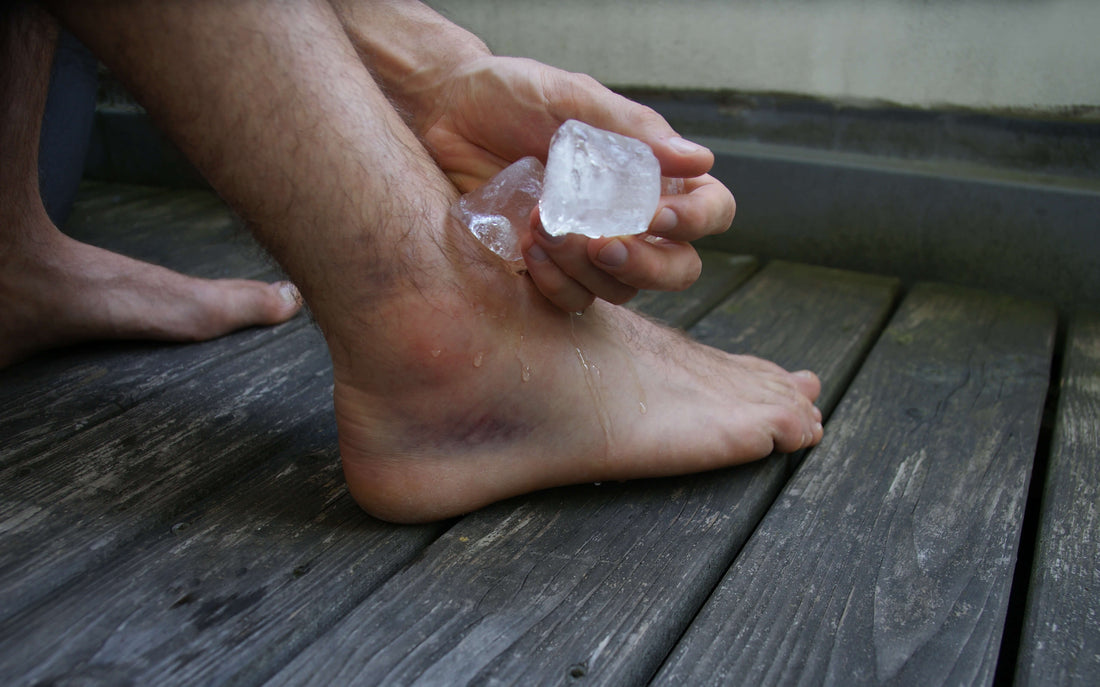Hands up if you automatically reach for an ice pack after an injury? You're not alone. For decades, sports medicine has ingrained in us that icing is the gold standard for acute injury treatment. But what if this universally accepted practice is actually delaying your recovery?
As a Physiotherapist who has treated thousands of patients, I stopped recommending ice for injuries fifteen years ago. The results? Dramatically faster recovery times and better long-term outcomes. In this comprehensive guide, we'll explore why the RICE method is fast becoming outdated and what you should do instead.
🔑 Key Takeaways
- Ice may delay healing by interfering with the body's natural inflammatory response
- Swelling and inflammation are necessary for proper tissue repair
- Movement beats rest for efficient swelling removal and recovery
- Effective alternatives exist that work with your body's healing processes
❄️ The Icy Truth: Why We've Been Icing Wrong for Decades
The RICE protocol (Rest, Ice, Compression, Elevation) has been the cornerstone of sports medicine since Dr. Gabe Mirkin coined the term in his 1978 book Sportsmedicine. But here's the shocking truth: Dr. Mirkin himself has publicly recanted his recommendation after reviewing more recent evidence.
In a 2015 article on his website, Mirkin stated: "Coaches have used my 'RICE' guideline for decades, but now it appears that both ice and complete rest may delay healing." This revelation challenges everything we thought we knew about injury recovery.
📜 The Historical Roots of Icing Injuries
Understanding why we ice requires looking back at its origins. Gary Reinl, author of Iced: The Illusionary Treatment Option, traces our ice obsession to a specific 1962 medical case:
When 12-year-old Everett Knowles had his arm severed in a train accident, doctors used ice to preserve the limb during transport. This successful reattachment case was widely publicised, and the ice application became misinterpreted as a general healing technique rather than a specific preservation method.
From this single case, ice therapy evolved from a limb preservation technique to a standard injury treatment—despite lacking scientific validation for this broader application.
🧬 The Body's Natural Healing Process vs. Icing
To understand why ice is problematic, we need to examine the body's sophisticated healing cascade:
Stage 1: Inflammation (The Cleanup Phase)
Contrary to popular belief, inflammation isn't the enemy—it's the first crucial step in healing. This phase involves:
- Vascular changes: Blood vessel constriction to control bleeding, followed by dilation to allow healing cells access
- Cellular cleanup: Specialized cells remove damaged tissue and prepare the area for repair
- Swelling: Accumulation of waste products and fluid that naturally splints the area
Stage 2: Tissue Repair and Remodeling
This phase involves scar tissue formation and tissue regeneration that can take weeks to months, depending on the injury severity.
The critical problem with icing: It disrupts Phase 1 by constricting blood vessels and reducing circulation precisely when the injury site needs increased blood flow for cleanup and repair.
⚡ The 5 Major Problems with Icing Injuries
1. Delayed Inflammation Response
Ice temporarily pauses the inflammatory process, but inflammation resumes once the tissue rewarms. This artificial delay extends the overall healing timeline.
2. Increased Swelling
Paradoxically, ice may increase swelling by making blood vessels "leaky" once they rewarm. Gary Reinl compares this to "freezing a tube of toothpaste"—it makes congestion harder to remove.
3. Masked Pain Signals
While pain relief seems beneficial, pain serves as an important guide for safe movement. Numbing this feedback system can lead to reinjury.
4. Tissue Damage Risk
Reduced blood flow (ischemia) can cause additional cell death in already compromised tissue.
5. Lymphatic System Interference
The lymphatic system—crucial for waste removal—relies on muscle movement. Ice and rest combine to create the perfect environment for swelling stagnation.
✅ When Ice Might Still Be Appropriate
Despite the evidence against routine icing, there are specific scenarios where ice serves a purpose:
- Boxing injuries: Temporarily reducing swelling around the eye to maintain vision during a fight
- Managing pain and swelling before reduction
- When specifically prescribed by your surgeon
The key distinction: these are short-term tactical applications where immediate function outweighs long-term healing optimisation.
🚀 Modern Alternatives to Ice and RICE
Here are the evidence-based techniques I recommend to my patients for faster recovery:
1. Movement-Based Recovery (The Gold Standard)
Principle: Gentle, pain-free movement stimulates the lymphatic system and promotes healing.
Implementation:
- Weight-bearing as tolerated (using crutches if necessary)
- Active range of motion within pain limits
- Isometric muscle contractions
- The goal is "relative rest," not complete immobilisation
2. Voodoo Floss Compression
Popularised by Physical Therapist Kelly Starrett, this technique combines compression with movement:
- Wrap the injured area with elastic bands
- Perform pain-free movements for 1-2 minutes
- Removes swelling more effectively than static compression
Learn more about Voodoo Floss bands
3. MARC Pro Muscle Stimulation
Electronic muscle stimulation provides gentle, non-fatiguing contractions that pump swelling away:
- Can be used for extended periods
- Promotes circulation without pain
- Particularly useful when active movement is limited
4. Controlled Breathing Techniques
Methods like the Wim Hof breathing protocol can:
- Increase oxygen delivery to injured tissues
- Reduce pain perception through nervous system regulation
- Enhance mental focus on healing
5. Gentle Massage
Superficial massage around (not directly on) the injured area can:
- Stimulate lymphatic drainage
- Reduce muscle guarding
- Provide pain relief without interfering with inflammation
❓ Frequently Asked Questions
Does ice reduce inflammation?
Temporarily, yes. But since inflammation is necessary for healing, reducing it may delay recovery. As Dr. Ledbetter notes: "There can be inflammation without healing, but never healing without inflammation."
What about ice baths for recovery?
Ice baths may help with nervous system regulation but should be timed away from training sessions. They still interfere with the healing process and should be used strategically, not routinely.
Is heat better than ice?
Heat has different applications—it's better for chronic stiffness but can increase swelling in acute injuries. Movement remains superior to both for most acute injuries.
How long should typical injuries take to heal?
With optimal treatment (minus ice), many soft tissue injuries that traditionally take 4-6 weeks can resolve in 2-3 weeks. The key is working with your body's natural processes rather than against them.
💡 The Bottom Line: Rethink Your First Aid Kit
The evidence against routine icing continues to grow. While ice isn't "bad" in the sense of causing harm, it's suboptimal for healing. The most compelling argument comes from the method's creator himself—Dr. Mirkin no longer recommends the protocol he pioneered.
In my physiotherapy practice, eliminating ice has consistently resulted in faster recoveries. Patients are often surprised when I recommend movement over ice, but the results speak for themselves.
The paradigm shift is simple: Instead of trying to suppress your body's natural healing response, support it. Use movement, gentle compression with motion, and breathing techniques to work with your physiology, not against it.
Save the ice for your post-recovery celebration drinks—your body will thank you for the faster healing timeline.
What's been your experience with ice versus movement-based recovery? Share your thoughts in the comments below!

